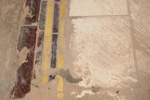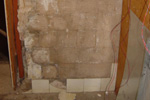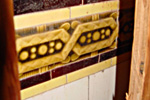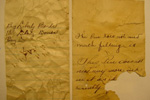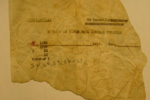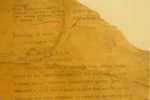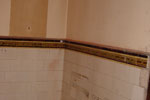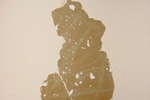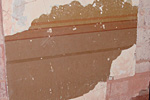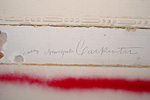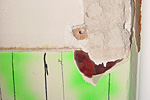The EEOB has been next to the White House for nearly 130 years. It holds an important place in both the city's and nation's architectural, political, and popular history. However, much of the buildings history has been forgotten over time, and in some cases has become hidden from us. During construction or renovation projects, the history of former occupants and former decorative finishes are discovered.
For example, during the current modernization project underway on the west side of the EEOB, original tile finishes installed in 1888 when the building was built were discovered. The title was found on the floor and walls surrounding the former Secretary of War's private bathroom, used between 1888 and 1938.
Original documents are often found hidden in the walls too. While opening a chase in the wall at the fourth floor, a hidden stash of nearly 100 original documents were uncovered. The oldest document dates from 1913. The most recent document dates from the 1940s. Together these documents are a tangible link to a variety of work completed by staff of the Departments of War and State that occupied the offices of the West side of the building.
Sometimes evidence of the work is mundane, such as lists of War Department vacancies, simple arithmetic, or sheets of paper showing the staff practicing their penmanship, or testing new ink pens. Other finds were much more exciting.
Several documents were uncovered that talk about political concerns in Bolivia, and one document refers to a revolution being plotted in that country. Research into the various names mentioned in the document, indicates that the revolution did not occur, because several of the persons named are mentioned in the Washington Post a couple of years later making the social circuit around town.
| 



